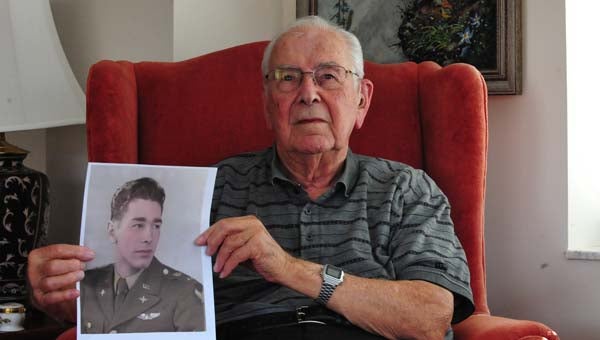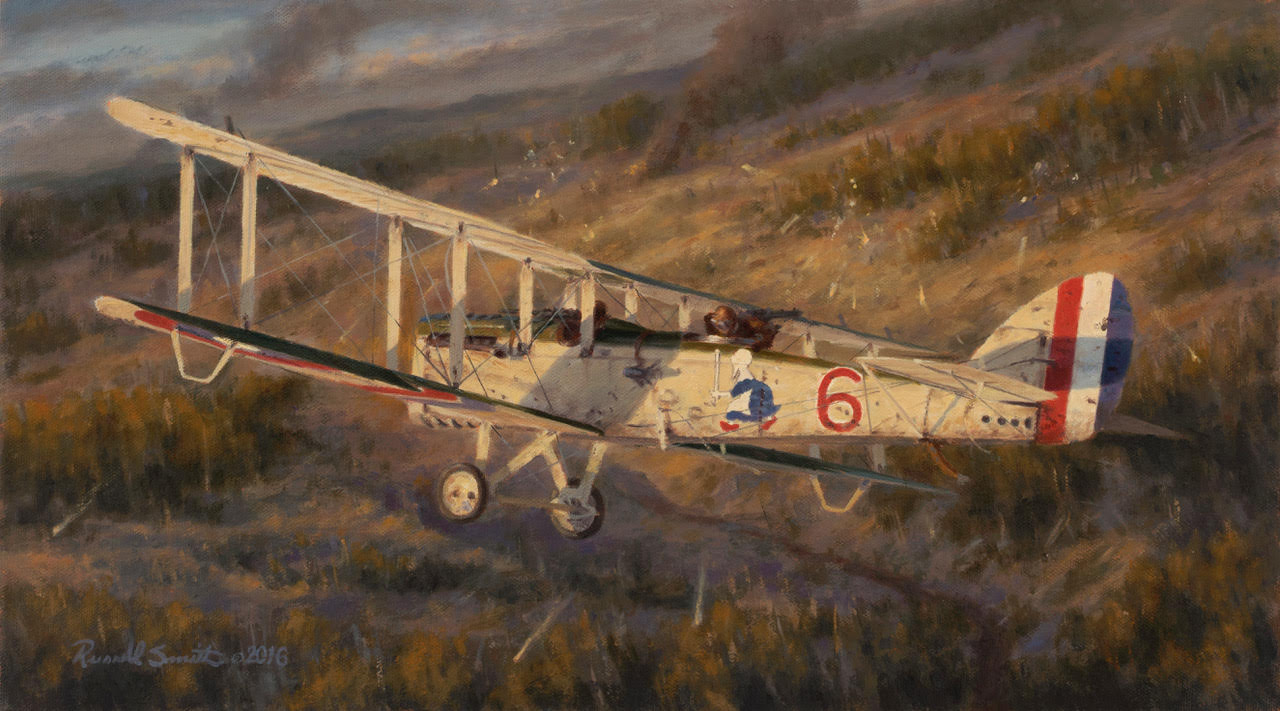Sandy Groendyke: Protected by an angel
Published 8:07 pm Saturday, November 14, 2015
Sandy Groendyke tapped his shoulder, and referred to “a little white angel” that he feels has been sitting there protecting him from calamity.
Who can doubt him? A resident of Tryon Estates, Groendyke force-landed his B-17 bomber in a German farm field after German fire killed one of the crew in World War II. All nine remaining crewmembers, including Groendyke, were uninjured in the landing.
Trending
They were immediately captured by German troops, but also survived their POW camp experience, even toward the end of World War II, when German supplies were stretched thin.
Groendyke has had a successful and satisfying life since. Apparently that “little white angel” likes his shoulder.
Born in north-central New Jersey, Groendyke worked for the phone company after graduating high school. But, he wanted to learn to fly, and attended aviation school at night.
Back then, during the Great Depression, Groendyke remembers, “Everybody wanted to fly, but nobody had the money to fly.”
When the Japanese attacked Pearl Harbor, he and some other students decided to take the test to become aviation cadets in the U.S. Army Air Corps.
“So, we pass the examination to get into the Cadets,” Groendyke said. It was the start of a dream to fly airplanes.” He trained at Casey Jones School of Aeronautics, now Vaughn College of Aeronautics and Technology.
Trending
After graduation as a cadet, Groendyke began training in a four-engine B-17 bomber. After graduating from B-17 school, he was sent to Florida, where they made up the crews.
From Florida, Groendyke and other crewmembers were sent to Gulfport, Miss., where they were trained in simulated combat.
“I was happy to be flying,” Groendyke remembers. “To be in command of a crew was even more responsibility and satisfaction.” Ten-member B-17 crews consisted of two pilots, a flight engineer, several gunners and a bombardier.
After a week’s shakedown to make sure everything was operating properly, Groendyke and his crew were sent to England, closer to the fighting, and reported to the 351st Bomb Group.
Did they think of the dangers in the skies?
“We were too young,” remembers Groendyke. “I was 22.”
Not in England long, “I was shot down on my second mission,” he said, the crew’s first mission considered simply a “milk run,” one with a low chance of danger.
On this, the second mission, “We had just dropped our bombs over train yards in Nuremberg, Germany, a crucial mission,” he stated, as such bombings disrupted the transport of Nazi war supplies.
Already turning around to return to England, “we took a direct hit on the (plane’s) nose. Their bombardier was fatally wounded, living just 15 to 20 minutes. The plane’s two internal engines did not run at all; the outer two “ran only for a time.”
“We took inventory of battle damage,” Groendyke said. They left the formation, as they could not keep up with the other planes. We headed toward the nearest friendly place, which was Switzerland.” They were unable to make it more than about 105 miles from the bombing area, and broke through clouds over a farming area in southern Germany.
After selecting a farm field for an emergency landing, Groendyke followed his training, and landed into the wind.
“I remember a split rail fence at the end of the field. When we hit it, it went like match sticks, remembers Groendyke who saw bits of fence fly in all directions. Except for the fence, he’d made a good landing, due to training in making such forced landings.
“We were wondering what would happen next. No one had a scratch on them, except for the deceased bombardier.” It was Oct. 3, 1944.
German troops had seen the bomber circle, “and were there waiting.” The troops put their captives in an old building. They were eventually sent to an interrogation point, but on the way, at a rail station, Groendyke remembers an incident well.
On an adjacent platform was a group of German civilians who made threatening noises and gestures at the Americans. The German military police told the civilians to quiet down, then put their backs to the captives, and “pointed their guns at their own people.” Groendyke had seen where such civilian mobs lynched Allied fighters.
In this case, the crowd quieted.
“I had that little white angel sitting on my shoulder through all the tough times. He’s still there.”
After five days at an interrogation point, the prisoners were sent to Stalag Luft 1, a German prisoner of war camp near Barth, in northern Germany.
“You can imagine how many planes were shot down,” Groendyke said, especially since not all crewmembers survived.
“We were there until the war was over,” he said, which was about nine months. “We were not physically mistreated if we behaved themselves,” Groendyke mentioned.
“German food was in extremely short supply,” Groendyke said, “but fortunately, we got Red Cross parcels of food that filled in to give you a minimal diet. That was always a big day,” he said of the days when the parcels arrived.
“Within the compound,” Groendyke remembers, “you were unrestricted. Just don’t get near a fence.”
In addition to regular food rations, the Germans gave the prisoners rations of oleo and sugar. So plentiful was the oleo, that “we used it to make candles.”
Using shallow metal cans, they also made “kriegie” lights, using the oleo and improvised wicks.
“Everybody had a kriegie light.”
Prisoners were issued two blankets, but had to endure the coldest winter known in Germany, even to this day. They had to sleep in their long Army-issue woolen coats.
“That was a Godsend,” Groendyke said.
Because the Allies had a commanding officer in the camp, the prisoners only had to follow that person’s orders, after German commanders conferred with him.
Prisoners put out a newspaper each day, as they had up-to-date news of the war. “We had German news. We watched the war go on . . . It was quite a deal.”
At war’s end, Groendyke was liberated by the Russians. Russian and Allied troops approached the camp from opposite directions. Prisoners knew that at that point, the Germans would pull out.
“Something up there saved me,” Groendyke asserted.
The Russians told the Americans that they were liberated, and to pull down the compound’s fences. They also warmed the Americans of German mines in the surrounding forest, but one of the now-liberated prisoners made it into the town.
Part of the way home for Groendyke and others were B-17 and B-24 bombers that Allied commanders had negotiated to use. Former POWs were flown to France to Camp Lucky Strike.
Eventually, Groendyke and a fellow officer managed to obtain weekend passes to Paris, and spent several days exploring the city.
Later, they confessed to being AWOL, and got a dressing down, but since the war was over, they were not disciplined.
Before Groendyke was involved in any fighting, he and his sweetheart Mary Helen were married.
“We had a great life, a 64-year love affair,” he noted. Mary Helen passed away in 2007. They’d been in North Carolina since 1986.
If all this were not enough, a man named Rolfe contacted Groendyke not many years ago. Rolfe had lived in the town near where Groendyke force-landed his B-17, got all the plane’s information, and contacted Groendyke, who visited the town where, many years before, his crew was shot down by German fire. Also there was the son of the farmer, whose split rail fence took a direct hit from the landing plane.
On that visit, “everybody was so gracious,” remembers Groendyke.
Until that visit, Groendyke had been bothered by dreams in which his plane crashed through the fence, and sent bits of it flying.
After his re-visit, “I never had the dreams again.”
# # #
5314: Sandy Groendyke holds two photographs. In the top photo, taken on Groendyke’s re-visit to the town near where his plane was shot down in 1944, are, from left, Groendyke, the son of the farmer whose field Groendyke force-landed his B-17 bomber, and Rolfe, the German who had learned of Groendyke after studying information available for the crashed plane. Rolfe had invited Sandy to return to the area where Groendyke landed the plane in 1944.






